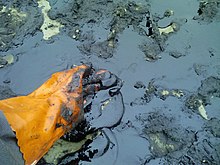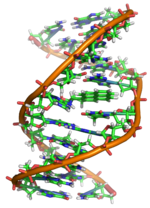In anthropology, high-context culture and low-context culture is a measure of how explicit the messages exchanged in a culture are, and how important the context
is in communication. High and low context cultures fall on a continuum
that describes how a person communicates with others through their range
of communication abilities: utilizing gestures, relations, body language, verbal messages, or non-verbal messages. These concepts were first introduced by the anthropologist Edward T. Hall in his 1976 book Beyond Culture.
According to Hall, in a low-context culture, the message will be
interpreted through just the words (whether written or spoken) and their
explicit meaning. In a high-context culture, messages are also
interpreted using tone of voice, gesture, silence or implied meaning, as
well as context or situation. There, the receiver is expected to use the situation, messages and cultural norms to understand the message.
High-context cultures often stem from less direct verbal and nonverbal communication, utilizing small communication gestures and reading into these less direct messages with more meaning. Low-context cultures are the opposite; direct verbal communication is needed to properly understand a message being said and doing so relies heavily on explicit verbal skills.
"High" and "low" context cultures typically refer to language groups, nationalities, or regional communities. However, they have also been applied to corporations, professions and other cultural groups, as well as settings such as online and offline communication.
High-context cultures often stem from less direct verbal and nonverbal communication, utilizing small communication gestures and reading into these less direct messages with more meaning. Low-context cultures are the opposite; direct verbal communication is needed to properly understand a message being said and doing so relies heavily on explicit verbal skills.
"High" and "low" context cultures typically refer to language groups, nationalities, or regional communities. However, they have also been applied to corporations, professions and other cultural groups, as well as settings such as online and offline communication.
Examples of higher and lower context cultures
Cultural
contexts are not absolutely "high" or "low". Instead, a comparison
between cultures may find communication differences to a greater or
lesser degree. Typically a high-context culture will be relational, collectivist,
intuitive, and contemplative. They place a high value on interpersonal
relationships and group members are a very close-knit community.
Typically a low-context culture will be less close-knit, and so
individuals communicating will have fewer relational cues when
interpreting messages. Therefore, it is necessary for more explicit
information to be included in the message so it is not misinterpreted. Not all individuals in a culture can be defined by cultural stereotypes,
and there will be variations within a national culture in different
settings. For example, Hall describes how Japanese culture has both low-
and high-context situations.
However, understanding the broad tendencies of predominant cultures can
help inform and educate individuals on how to better facilitate
communication between individuals of differing cultural backgrounds.
Although the concept of high- and low-context cultures is usually
applied in the field of analyzing national cultures, it can also be
used to describe scientific or corporate cultures, or specific settings
such as airports or law courts. A simplified example mentioned by Hall
is that scientists working in "hard science" fields (like chemistry and physics) tend to have lower-context cultures: because their knowledge and models have fewer variables, they will typically include less context for each event they describe. In contrast, scientists working with living systems need to include more context because there can be significant variables which impact the research outcomes.
Croucher’s study examines the assertion that culture influences
communication style (high/low context) preference. Data was gathered in
India, Ireland, Thailand, and the United States where the results
confirm that "high-context nations (India and Thailand) prefer the
avoiding and obliging conflict styles more than low-context nations
(Ireland and the United States), whereas low-context nations prefer the
uncompromising and dominating communication style more than high-context
nations."
In addition, Hall identified countries such as Japan, Arabic
countries and some Latin American Countries to practice high-context
culture; “High context communication carries most of its information
within physical acts and features such as avoiding eye contact or even
the shrug of a shoulder.”
On the other hand, he identified countries such as Germany, the United
States and Scandinavia as low context cultures. These countries are
quite explicit and elaborate without having prior knowledge to each
member’s history or background.
Cultures and languages are defined as higher or lower context on a spectrum. For example, it could be argued[by whom?] that the Canadian French language is higher context than Canadian English, but lower context than Spanish or French French. An individual from Texas (a higher-context culture) may communicate with a few words or use of a prolonged silence characteristic of Texan English, where a New Yorker would be very explicit (as typical of New York City English), although both speak the same language (American English) and are part of a nation (the United States of America) which is lower-context relative to other nations. Hall notes a similar difference between Navajo-speakers and English-speakers in a United States school.
Hall and Hall proposed a "spectrum" of national cultures from "High-Context cultures" to "Low-Context Cultures. This has been expanded to further countries by Copeland & Griggs (1985).
- Higher-context culture: Afghans, African, Arabic, Brazilians, the Chinese, Filipinos, French Canadians, the French, Greeks, Hawaiian, Hungarians, Indians, Indonesian, Italians, Irish, Japanese, Koreans, Latin Americans, Nepali, Pakistani, Persian, Portuguese, Russians, Southern United States, the Spanish, Thai, Turks, Vietnamese, South Slavic, West Slavic.
- Lower-context culture: Australian, Dutch, English Canadians, the English, Finnish, Germans, Israelis, New Zealand, Scandinavia, Switzerland, United States.
Cultural context can also shift and evolve. For instance, a study has argued that both Japan and Finland (high-context cultures) are becoming lower-context with the increased influence of Western European and United States culture.
The overlap and contrast between context cultures
The
categories of context cultures are not totally separate. Both often
take many aspects of the other's cultural communication abilities and
strengths into account.
The terms high- and low-context cultures are not classified with strict
individual characteristics or boundaries. Instead, many cultures tend
to have a mixture or at least some concepts that are shared between
them, overlapping the two context cultures.
Ramos suggests that "in low context culture, communication
members’ communication must be more explicit. As such, what is said is
what is meant, and further analysis of the message is usually
unnecessary." This
implies that communication is quite direct and detailed because members
of the culture are not expected to have knowledge of each other's
histories, past experience or background. Because low-context
communication concerns more direct messages, the meaning of these
messages is more dependent on the words being spoken rather than on the
interpretation of more subtle or unspoken cues.
The Encyclopedia of Diversity and Social Justice states that,
"high context defines cultures that are relational and collectivist, and
which most highlight interpersonal relationships. Cultures and
communication in which context is of great importance to structuring
actions is referred to as high context." In
such cultures, people are highly perceptive of actions. Furthermore,
cultural aspects such as tradition, ceremony, and history are also
highly valued. Because of this, many features of cultural behavior in
high-context cultures, such as individual roles and expectations, do not
need much detailed or thought-out explanation.
According to Watson, "the influence of cultural variables
interplays with other key factors – for example, social identities,
those of age, gender, social class and ethnicity; this may include a
stronger or weaker influence."
A similarity that the two communication styles share is its influence
on social characteristics such as age, gender, social class and
ethnicity. For example, for someone who is older and more experienced
within a society, the need for social cues may be higher or lower
depending on the communication style. The same applies for the other
characteristics in varied countries.
On the other hand, certain intercultural communication
skills are unique for each culture and it is significant to note that
these overlaps in communication techniques are represented subgroups
within social interactions or family settings. Many singular cultures that are large have subcultures inside of them, making communication and defining them more complicated than the low context and high context culture scale. The diversity
within a main culture shows how the high and low scale differs
depending on social settings such as school, work, home, and in other
countries; variation is what allows the scale to fluctuate even if a
large culture is categorized as primarily one or the other.
Miscommunication within culture contexts
Between each type of culture context, there will be forms of miscommunication because of the difference in gestures, social cues,
and intercultural adjustments; however, it is important to recognize
these differences and learn how to avoid miscommunication to benefit
certain situations.
Since all sets of cultures differ, especially from a global standpoint
where language also creates a barrier for communication, social
interactions specific to a culture normally require a range of
appropriate communication abilities that an opposing culture may not
understand or know about.
This significance follows into many situations such as the workplace,
which can be prone to diversified cultures and opportunities for
collaboration and working together.
Awareness of miscommunication between high and low context cultures
within the workplace or intercultural communication settings advocates
for collected unification within a group through the flexibility and
ability to understand one another.
How higher context relates to other cultural metrics
Diversity
Families, subcultures and in-groups typically favour higher-context communication.
Groups that are able to rely on a common background may not need to use
words as explicitly to understand each other. Settings and cultures
where people come together from a wider diversity of backgrounds such as
international airports, large cities, or multi-national firms, tend to use lower-context communication forms.
Language
Hall links language to culture through the work of Sapir-Whorf on linguistic relativity. A trade language will typically need to explicitly explain more of the context than a dialect which can assume a high level of shared context. Because a low-context setting cannot rely on shared understanding of potentially ambiguous
messages, low-context cultures tend to give more information, or to be
precise in their language. In contrast, a high-context language like
Japanese or Chinese can use a high number of homophones but still be understood by a listener who knows the context.
Elaborated and restricted codes
The concept of elaborated and restricted codes is introduced by sociologist Basil Bernstein in his book Class, Codes and Control.
An elaborated code indicates that the speaker is expressing his/her
idea by phrasing from an abundant selection of alternatives without
assuming the listener shares significant amounts of common knowledge,
which allows the speaker to explain their idea explicitly. In contrast,
restricted codes are phrased from more limited alternatives, usually
with collapsed and shortened sentences. Therefore, restricted codes
require listeners to share a great deal of common perspective to
understand the implicit meanings and nuances of a conversation.
Restricted codes are commonly used in high-context culture
groups, where group members share the same cultural background and can
easily understand the implicit meanings "between the lines" without further elaboration.
Conversely, in cultural groups with low context, where people share
less common knowledge or ‘value individuality above group
identification’, detailed elaboration becomes more essential to avoid
misunderstanding.
Collectivism and individualism
The concepts of collectivism and individualism have been applied to high- and low-context cultures by Dutch psychologist Geert Hofstede in his Cultural Dimensions Theory.
Collectivist societies prioritize the group over the individual, and
vice versa for individualist ones. In high-context cultures, language
may be used to assist and maintain relationship-building and to focus on
process. India and Japan are typically high-context, highly
collectivistic cultures, where business is done by building
relationships and maintaining respectful communication.
Individualistic cultures promote the development of individual
values and independent social groups. Individualism may lead to
communicating to all people in a group in the same way, rather than
offering hierarchical respect to certain members. Because individualistic cultures may value cultural diversity,
a more explicit way of communicating is often required to avoid
misunderstanding. Language may be used to achieve goals or exchange
information. The USA and Australia are typically low-context, highly individualistic cultures, where transparency and competition in business are prized.
Stability and durability of tradition
High-context
cultures tend to be more stable, as their communication is more
economical, fast, efficient and satisfying; but these are gained at a
price of devoting time into preprogramming cultural background, and their high stability might come with a price of a high barrier for development. By contrast, low-context cultures tend to change more rapidly and drastically, allowing extension to happen at faster rates. This also means that low-context communication may fail due to the overload of information, which makes culture lose its screening function.
Therefore, higher-context cultures tend to correlate with cultures that also have a strong sense of tradition and history, and change little over time. For example, Native Americans in the United States have higher-context cultures with a strong sense of tradition and history, compared to general American culture.
Focusing on tradition creates opportunities for higher context
messages between individuals of each new generation, and the
high-context culture feeds back to the stability hence allows the
tradition to be maintained. This is in contrast to lower-context
cultures in which the shared experiences upon which communication is
built can change drastically from one generation to the next, creating
communication gaps between parents and children, as in the United States.
Facial expression and gesture
Culture also affects how individuals interpret other people's facial expressions. An experiment performed by the University of Glasgow
shows that different cultures have different understanding of the
facial expression signals of the six basic emotions, which are the
so-called "universal language of emotion"—happiness, surprise, fear, disgust, anger and sadness.
In high-context cultures, facial expressions and gestures take on
greater importance in conveying and understanding a message, and the
receiver may require more cultural context to understand "basic"
displays of emotions.
Marketing and advertising perspective
Cultural differences in advertising and marketing may also be explained through high- and low-context cultures. One study on McDonald's online advertising compared Japan, China, Korea, Hong Kong,
Pakistan, Germany, Denmark, Sweden, Norway, Finland, and the United
States, and found that in high-context countries, the advertising used
more colors, movements, and sounds to give context, while in low-context
cultures the advertising focused more on verbal information and linear
processes.



























